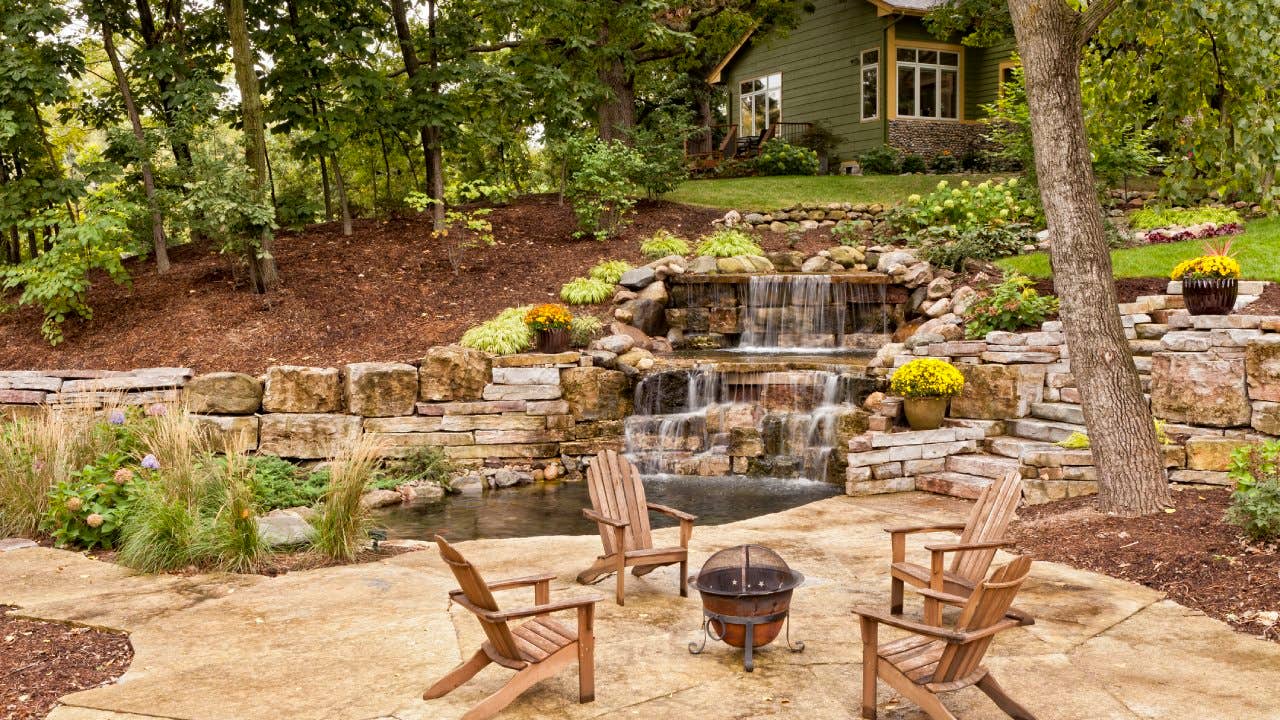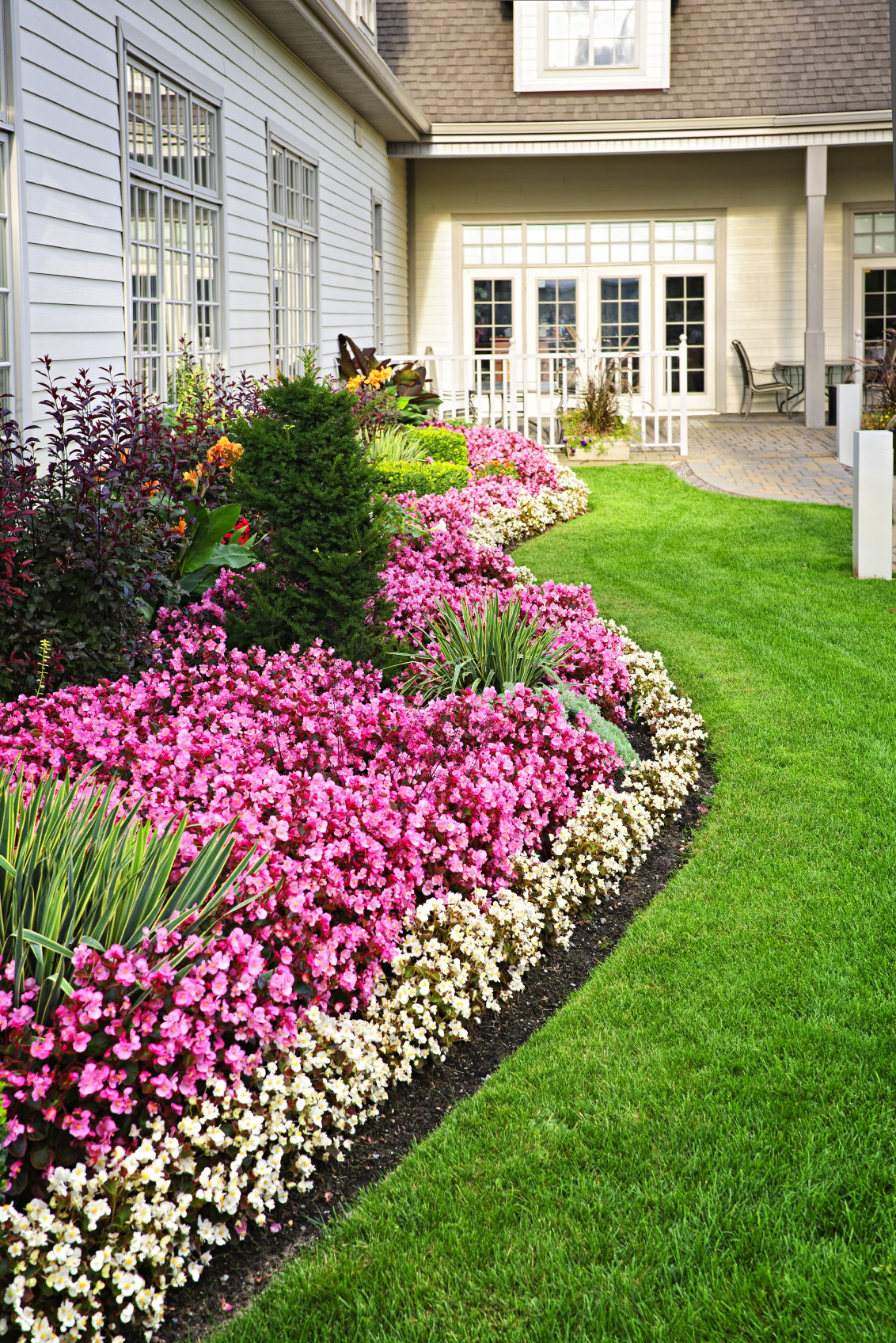Elevate Your Property's Visual With Sustainable Landscaping Designs and Eco-Friendly Practices

Advantages of Sustainable Landscaping
Applying sustainable landscaping methods not just preserves natural deposits however likewise advertises biodiversity and improves total ecological wellness. By selecting green landscape design methods, homeowner can gain a plethora of benefits that prolong past simply aesthetic charm. One considerable advantage is the reduction of water usage via the use of drought-resistant plants, rain gardens, and effective irrigation systems. This not just reduces energy bills yet also adds to water conservation initiatives in the community.
In addition, lasting landscape design can improve dirt wellness by decreasing using chemical plant foods and chemicals, thereby developing a healthier environment for plant growth and helpful soil microorganisms. This, in turn, enhances the overall strength of the landscape to endure ecological stressors and climate change effects - bush removal Jacksonville. Furthermore, lasting landscaping practices can attract varied wildlife, including pollinators like and butterflies, fostering a much more well balanced and lively ecosystem within the property
Incorporating Indigenous Plants
To build on the benefits of sustainable landscape design, a tactical focus on including indigenous plants can better improve ecological resilience and promote biodiversity within the landscape. Indigenous plants are types that normally occur in a certain area and have progressed to thrive in the regional climate, dirt conditions, and ecological community. By including native plants in landscape design layouts, homeowner can reduce water usage, lessen the need for chemical pesticides and fertilizers, and support the neighborhood wild animals populace.
Incorporating indigenous plants additionally helps in protecting the special character and identification of a region's plants. These plants frequently need less maintenance as soon as developed, making them a lasting and economical landscaping service in the future. Furthermore, indigenous plants can attract native pollinators like and butterflies, adding to the overall health of the community.
When choosing indigenous plants for landscaping tasks, it is crucial to pick types that are fit to the specific ecological conditions of the website. Consulting with herb yards or neighborhood nurseries can offer valuable guidance on picking the ideal native plants for a certain location. By integrating indigenous plants right into landscape design styles, building owners can develop stunning, sustainable exterior spaces that benefit both the neighborhood and the atmosphere.

Water Preservation Techniques
Efficient watering techniques play a critical role in lasting landscape design techniques, making certain optimum water conservation initiatives in exterior spaces. Drip watering supplies water directly to the roots of plants, minimizing evaporation and drainage.
Along with sophisticated watering techniques, xeriscaping is one more water-saving landscaping technique that focuses on making use of drought-resistant this hyperlink plants, mulch, and effective watering to create a low-water landscape layout - lawn cleanup Jacksonville. By picking native plants that are well-suited to the local climate and soil conditions, building proprietors can minimize the need for extreme watering, inevitably saving water and promoting a sustainable outdoor setting
Eco-Friendly Hardscaping Concepts
Enhancing outdoor areas with environment-friendly hardscaping features can contribute substantially to lasting landscape design practices. Choose for materials like reclaimed wood, recycled concrete, or natural rock to minimize environmental impact when considering hardscaping elements. These products not just include an unique aesthetic interest your outdoor space however likewise minimize the need for brand-new resources removal.
Executing permeable leading options such as gravel or absorptive concrete can help in reducing water runoff and promote groundwater recharge. These options enable rain to permeate right into the ground, protecting against disintegration and reducing the problem on stormwater systems.
Incorporating native plants into hardscaping designs can better enhance eco-friendliness by supporting neighborhood wild animals and reducing the demand for excessive watering or chemical treatments. By including vertical gardens or eco-friendly wall surfaces, you can present much more plants into urban settings, boosting air quality and biodiversity.
Integrating energy-efficient lighting, such as solar-powered LEDs, into hardscaping styles can decrease power intake and lower your residential property's carbon footprint. Prioritizing green hardscaping concepts not just enhances the elegance of your exterior area yet additionally demonstrates a dedication to environmental stewardship.
Upkeep Tips for Sustainable Landscapes

On a regular basis trim plants to promote healthy growth and avoid overgrowth that can read the full info here lead to pest infestations or diseases. Use natural fertilizers to nourish the dirt and plants without unsafe chemicals that can seep right into the atmosphere.
Final Thought
In final thought, lasting landscape design methods use various benefits for residential or commercial property proprietors, from enhancing the visual charm of the environments to advertising environmental preservation. By including indigenous plants, applying water preservation techniques, and utilizing green hardscaping ideas, homeowner can create stunning landscapes that are likewise ecologically responsible. With appropriate upkeep, lasting landscapes can grow and contribute to a healthier ecosystem for both human beings and wildlife.
In addition, lasting landscaping can enhance soil wellness by minimizing the use of chemical plant foods and chemicals, thereby creating a healthier setting for plant development and useful soil microorganisms.To construct upon the benefits of sustainable landscaping, a tactical emphasis on including indigenous plants can further boost eco-friendly resilience and promote biodiversity this content within the landscape. By including indigenous plants in landscape design layouts, building owners can minimize water use, minimize the requirement for chemical pesticides and plant foods, and support the neighborhood wildlife population.
These plants often need less upkeep when developed, making them a sustainable and economical landscape design option in the long run. By integrating indigenous plants into landscaping styles, residential property owners can produce gorgeous, lasting outside rooms that benefit both the community and the setting.